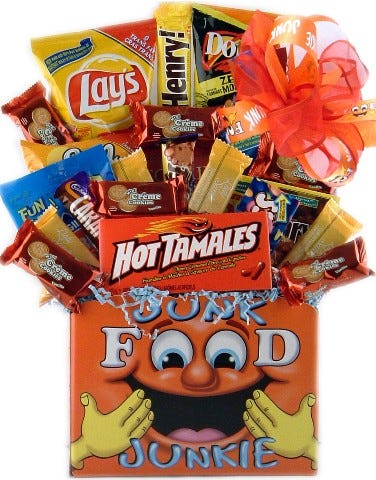Could biodegradable packaging be good for the environment and the waistline?
Earlier this week, the Northern India Himachal Pradesh High Court ordered a ban on the sale of junk food in non-biodegradable packaging, the Times of India reports.The court had previously called on a committee to report on junk food, which found that "it is obvious that junk food items are those, which are low in fiber but tasty, contain high calorific value, large amount of refined flour and high amount of fat and preservatives."
January 18, 2013
Earlier this week, the Northern India Himachal Pradesh High Court ordered a ban on the sale of junk food in non-biodegradable packaging, the Times of India reports.
The court had previously called on a committee to report on junk food, which found that "it is obvious that junk food items are those, which are low in fiber but tasty, contain high calorific value, large amount of refined flour and high amount of fat and preservatives."
 The solution? Instead of an outright ban of junk food, these items shall now be sold only in biodegradable plastic packaging. The thought process being: since biodegradable packaging tends to be more expensive; the cost will be pushed to the consumer looking to purchase the product. More expensive junk food means people may be less likely to buy the products, at least not as frequently as they once did.
The solution? Instead of an outright ban of junk food, these items shall now be sold only in biodegradable plastic packaging. The thought process being: since biodegradable packaging tends to be more expensive; the cost will be pushed to the consumer looking to purchase the product. More expensive junk food means people may be less likely to buy the products, at least not as frequently as they once did.
"This may make these items slightly more expensive and even if the consumption of these stuffs is reduced, it will be better for the health of children and may finally end up saving srores of rupees, which the state spends on health care, the judges pointed out," the Times of India writes.
Still, the term junk food is somewhat subjective and has not been defined legally yet. The committee did put together a list of food items that they believe are unhealthy, but the list is not yet finalized.
Junk food that was previously served in traditional plastic packaging included: chips, wafers, biscuits, lollypops, candies, candy bars, toffees, sweets, chewing gums, cheese puffs, cookies, ice creams, chocolates, noodles, sugary cereals, cornflakes and fruit cakes. Food items like milk, vegetable oil and medicine will be exempt from this ban.
"We also make it clear that if we find that this experiment is successful, then we may expand the scope of this order to cover other nonessential items also," the court said.
It will be interesting to see how they will measure this transition to biodegradable packaging. I'm curious of who will supply this packaging and how they will determine if it will reduce people's taste for junk food.
Throughout the article, they used the term biodegradable. Generally speaking there is confusion between the terms biodegradable and compostable. The U.S. Federal Trade Commission (FTC) says a package is considered biodegradable if it "completely breaks down and returns to nature, decomposing into elements found in nature within a reasonably short period of time after customary disposal." For products to be certified as compostable, "all the materials in the product or package will break down into, or otherwise become part of, usable compost (e.g., soil-conditioning material, mulch) in a safe and timely manner in an appropriate composting program or facility, or in a home compost pile or device."
Last year, I asked chemical giant BASF about the market for biodegradable and compostable packaging. A company representative said various 100% biodegradable packaging prototypes demonstrate that it is possible to fulfill a demand, but the final decision lies with the brand owner and with customers, who influence what is being sold in the market and what is regarded as an adequate price. BASF produces Ecoflex and Ecovio plastics, which it markets as "100% biodegradable."
If you take into consideration the worldwide obesity rates (which have more than doubled since 1980) along with countries reporting on packaging waste, it's quite an endeavor to try and solve both at the same time.
If more places combine the fight against obesity with their efforts to reduce waste, could we see more foods in biodegradable packaging?
About the Author(s)
You May Also Like


